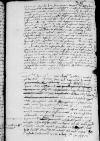List #1749
[Ioannes DANTISCUS] do [Johann TYMMERMANN]Löbau (Lubawa), 1537-10-19
Rękopiśmienne podstawy źródłowe:
Publikacje:
| ||||||
Tekst + aparat krytyczny + komentarzZwykły tekstTekst + komentarzTekst + aparat krytyczny
Venerabilis Domine, Frater et Amice carissime. Salutem et omnem felicitatem.
Accepi 1537-10-18⌊heri1537-10-18⌋ ab hoc domino
[1] Jakub Schroter cf. cf.
[2] Fees for church benefices – annates – were introduced in 1316 by Pope John XXII. The beneficiary’s formal pledge to pay the annates was the necessary condition of receiving a provision bulla for the new office. Starting from the Council of Constance (1414-1418), annates from higher-ranking benefices were to be paid in two annual installments at the Apostolic Camera in Rome. The amount of annates was specified for every benefice, though information was also gathered about the actual situation of each beneficiary and analyzed at the consistory during which the provision
was to be settled, and this is doubtless where Dantiscus saw a chance for reducing the fee (cf. Dudziak; further references there). Applications for a reduction to the fee seem to have been widespread at the time, as shown, for example, by the Polish episcopate’s letters to the pope in 1537 (cf. VMPL, No. DLXXX, DLXXXI, p. 520-523). See also letters cf.

 BCz, 244, p. 269
BCz, 244, p. 269